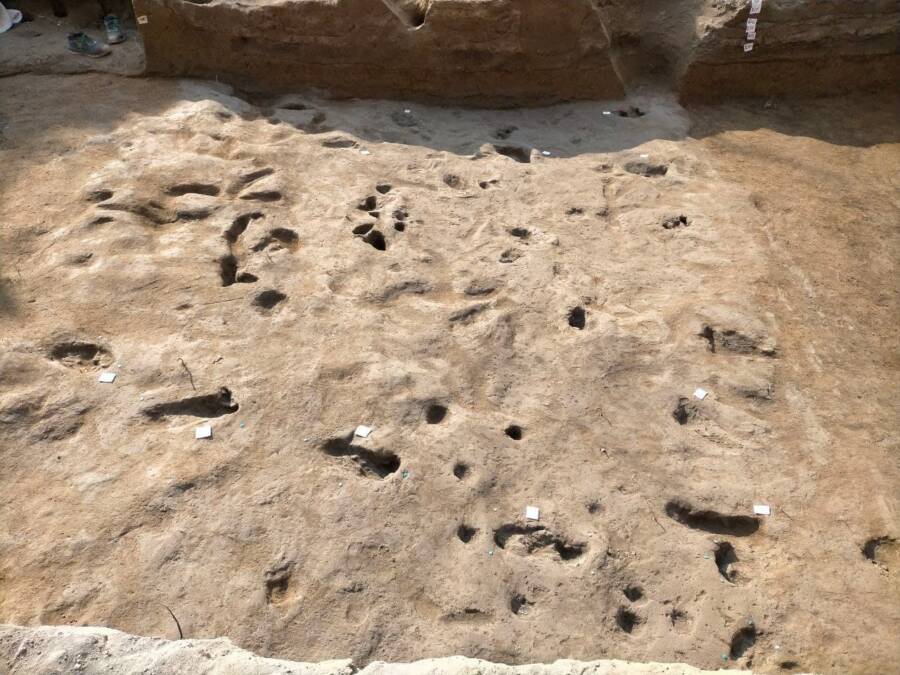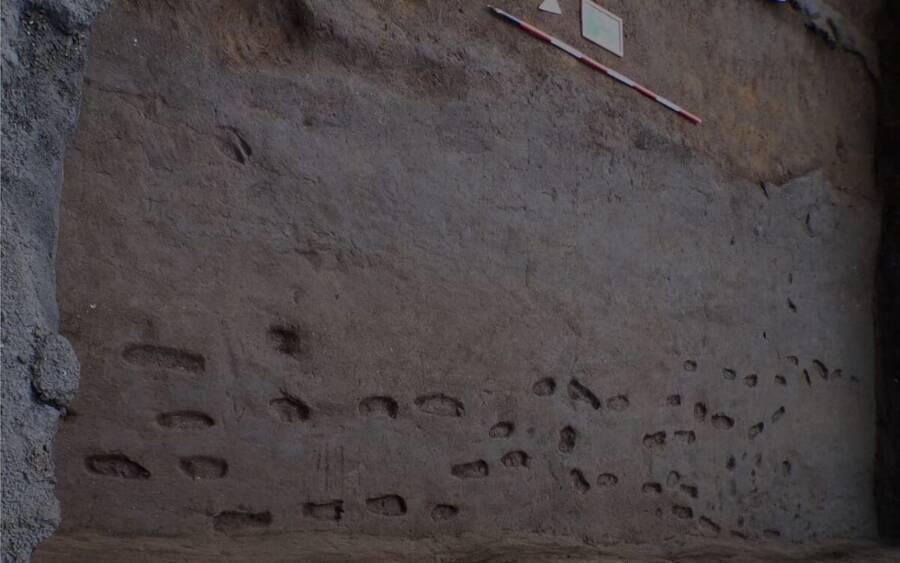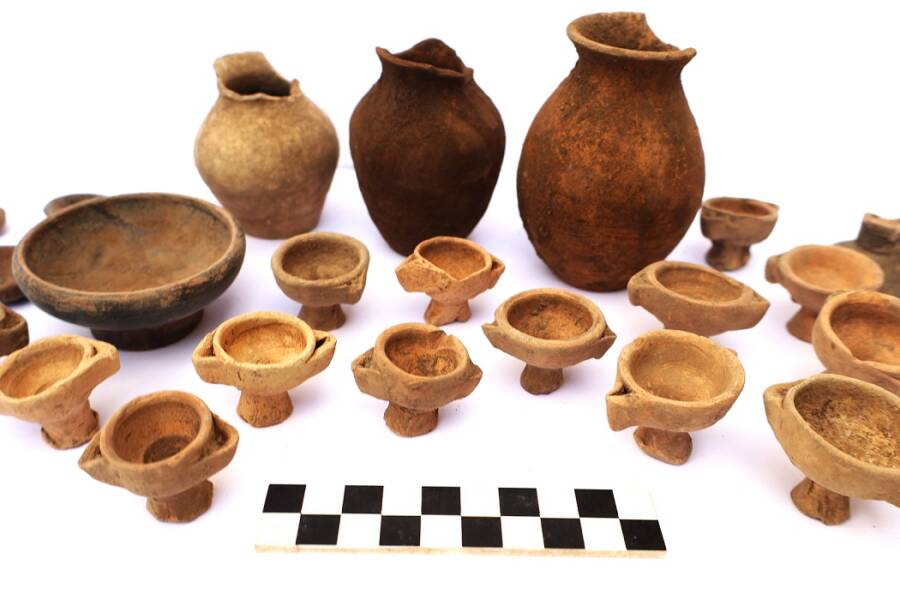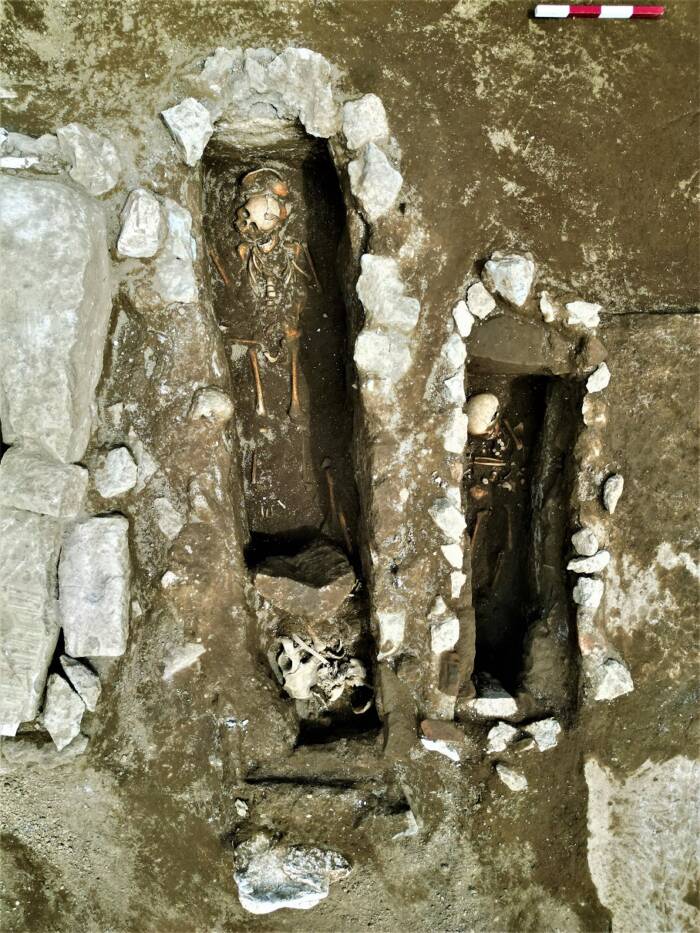These footprints were made more than 1,000 years before Mount Vesuvius destroyed Pompeii and Herculaneum in 79 C.E.

Soprintendenza Archeologia Belle Arti e Paesaggio di Salerno e AvellinoFootprints left by people fleeing an eruption of Mount Vesuvius during the Bronze Age.
In 79 C.E., Mount Vesuvius erupted in southern Italy, burying the towns of Pompeii and Herculaneum — and everyone within them — in ash. But more than 1,000 years before that, when Bronze Age villages still dotted the Italian coast, another eruption caused the area’s inhabitants to flee, and their footprints were preserved in the pyroclastic deposits for millennia.
Recently, archaeological excavations conducted alongside construction work on a gas pipeline near Vesuvius revealed these footprints — along with other priceless historical artifacts spanning thousands of years. Now, these findings are providing a vivid snapshot of ancient life in the region.
Pipeline Updates Reveal Bronze Age Footprints In Italy
For the past two years, archaeologists have been carrying out excavations alongside construction work to update a gas pipeline that runs past the municipalities of Nocera Superiore, Nocera Inferiore, Roccapiemonte, and Castel San Giorgio southeast of Naples. This project has unveiled historical treasures dating from the Bronze Age (3300 B.C.E. to 1200 B.C.E.) to Late Antiquity (the third through seventh centuries C.E.).
Perhaps the most extraordinary discovery was a series of footprints beside a stream. These tracks, dating back to the Bronze Age, were made as people and animals tried to flee an eruption of Mount Vesuvius, evidenced by the fact that they were preserved in pyroclastic deposits, according to a statement by the Superintendence of Archaeology, Fine Arts, and Landscape of Salerno and Avellino.

Soprintendenza Archeologia Belle Arti e Paesaggio di Salerno e AvellinoThe footprints were preserved for millennia by pyroclastic deposits.
Terrified townsfolk and animals alike left behind footprints as they rushed away from the deadly volcano. But their tracks aren’t the only thing archaeologists found in the region.
Uncovering The Rich Historical Legacy Of Southern Italy
Alongside the footprints, researchers also discovered a trove of historical treasures spanning thousands of years, such as the remains of huts from the late Bronze Age and early Iron Age. From the third and second centuries B.C.E., they uncovered miniature ceramics and pottery crafted by local inhabitants.

Soprintendenza Archeologia Belle Arti e Paesaggio di Salerno e AvellinoCeramics created between the third and second centuries B.C.E.
During the Roman era, two large complexes were constructed in the area. They may have been rustic villas dedicated to agricultural production, as evidenced by plow furrows found nearby.
Archaeologists also reconstructed the ancient road system that ran through the region. They identified at least 40 streets ranging from simple dust paths to more complex constructions complete with grooves from wagon wheels. Researchers say this network reveals “a world of connections that have shaped city life over the centuries.”
Along with structures, archaeologists identified several groups of burials. Some of them, dating to the Roman era and Late Antiquity, were covered in engraved stone slabs and mainly held the remains of children. Another, found near one of the villas, contained a sarcophagus that likely belonged to a high-ranking citizen.

Soprintendenza Archeologia Belle Arti e Paesaggio di Salerno e AvellinoArchaeologists uncovered several burials from various time periods.
Finally, from Late Antiquity, researchers found longhouses built with construction designs similar to prehistoric dwellings.
“This return to housing patterns of the past, likely due to socio-economic changes, testifies to human communities’ ability to adapt in the face of transformations,” researchers wrote.
After reading about the Bronze Age footprints found near Mount Vesuvius, learn how attacks from the mysterious Sea Peoples led to the collapse of the Bronze Age. Then, view unbelievable before and after photos of the Mount St. Helens eruption in 1980.





